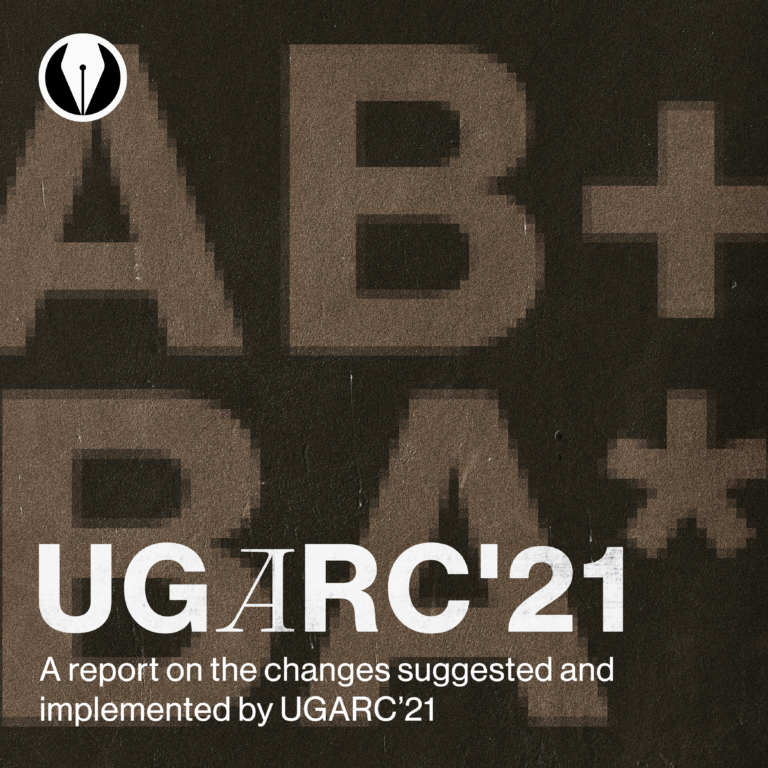It is well recognized by educationists all over the world that having evaluation in terms of discrete grades is better than giving continuous marks out of 100 (or whatever be the maximum marks). IITs and several other good quality institutes have been awarding grades for decades. Slowly, other universities in India are catching up with the practice. UGC recommends this. And even school boards are now coming around to the view that giving grades is better.
There are two questions that arise. Better in what respect. What kind of grading pattern is to be selected, in particular, how many different grades be there in the grading scheme. Actually, the second question cannot be answered without understanding the first.
The grades are better than marks because they reduce stress on the students. The world over, people have realized that performance metrics are extremely important for students, and they work hard to improve their measured performance. There are very few students who learn for the sake of learning. Normally, in a grading system, the students do have a sense of where they stand in a course, and therefore, what grade they can expect. They can estimate the effort they need to put in to maintain that grade, and the effort that is needed to improve the grade.
Basically, when they are studying for marks, then every extra hour of studies before the exam, could lead to possibly a few more marks, and that pressurizes the student to study more. While ingrading system, a few extra hours of efforts on the last few days may not give him an improved grade, and therefore, the student can be more relaxed. He can spend more effort on courses where the chance of improving the grade is higher.
Of course, we do want some stress on the students. We don’t want them to be completely relaxed throughout the year/semester to the extent that they don’t attend any classes, don’t do any assignments, don’t study for exams, etc. If we take the grading system to an extreme and have only two grades – Pass and Fail – there is absolutely no pressure on the student to study, and that leads to very poor performance on an average. (Many universities have tried pass/fail grades for a few courses, and have had the same result.)
On the other hand, if we have a finer gradingsystem, and if we consider the extreme situation of a different grade for every percentage mark (basically the good old marks scheme), then there is tremendous pressure on the student and that is not good for the learning either.
So, we need to find a balance. What is the right balance – there is no unanimity on this, as can be seen by the diversity of grading schemes in universities of the world. But what is of concern to me is that the grading schemes get changed for wrong reasons.
Just before I assumed the role of Director at LNMIIT Jaipur, they had decided to change the grading scheme, and many students and even faculty were not happy with that, and therefore, I had occasions to listen to lots of arguments in favor of the older scheme. Similarly, we have gone through lots of debates on this issue at IIT Kanpur.
Basically, students want a finer grading system. Let us look at a system where there are 5 grades – ‘A’, ‘B’, ‘C’, ‘D’, and ‘F’. The students in such a system would argue that if they are missing an ‘A’ grade and get a ‘B’ grade, it is too sharp a drop. If there was an intermediate grade, call it “A-” or “AB” or whatever, it would appear better on their transcript. This is a flawed argument since the assumption behind this argument is that whoever is getting an ‘A’ grade in the current system will continue to get an ‘A’ grade in the finer system. They don’t imagine that if there were a finer grade, some people from higher grade will be reduced to the intermediate grade as well. In fact, if we look at a 5-grade system on a 10 point scale, where passing grades have numerical equivalence of 4, 6, 8, and 10, and if we assume that the students will be equally divided in 4 bins, then the average CPI (or CGPA) would be 7. On the other hand, if we had finer grading system, and we had grades with numerical equivalence of each number from 4 to 10, and the number of students were equally divided into 7 bins now, the average CPI would remain 7. There have been many universities who have changed from coarse to finer grading and vice versa and have seen absolutely no change in their CPI/CGPA. So, the finer grades will only mean a slightly higher grade in a few courses, and a slightly lower grade in some other courses – with the overall impact on CPI being zero. So it really does not help the students.
On the other hand, while students wouldn’t agree – since comparing the impact of two systems on the stress levels is impossible for an individual student – the experts agree that the finer grading system would lead to greater stress – more competition amongst the students. So, each university has to consider whether their students are too stressed out, spending too much time on examination related learning – then make the grading system coarser. On the other hand, if the students seem to be taking the exams and other evaluation mechanisms too lightly, it is time to consider a finer grading system.
At the end, I will like to point out that the grades reduce stress primarily when the student can do a trade off between the effort and the expected grade. This trade off is possible only when there is a continuous evaluation process, whereby the student can correlated the effort and performance over a period of time before the final exam. Hence having exams/quizzes/assignments/projects and other evaluations throughout the year (or semester) is important for success of grading schemes. (Continuous evaluation is anyway a good idea, even if one is not implementing any grading scheme – so that the students learn at a smooth pace throughout the year/semester, and not having to cram everything at the last minute.)




